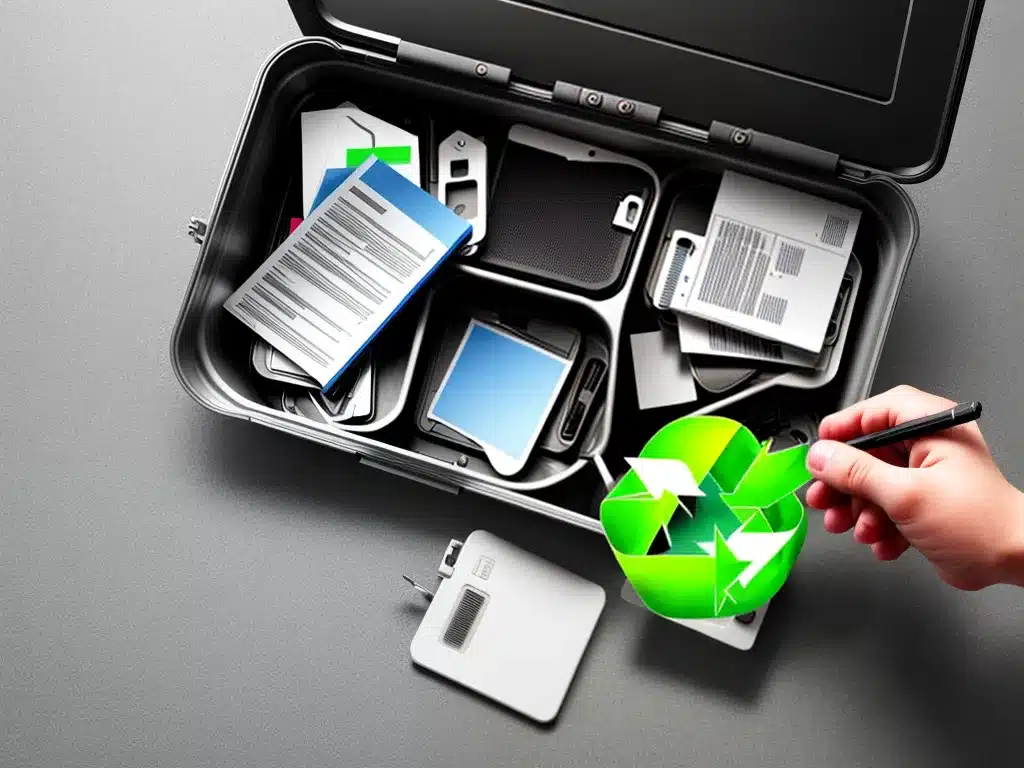
Overview of Recovering Deleted Files from the Recycle Bin
Losing important files that have been permanently deleted from the recycle bin can be incredibly frustrating. However, there are some techniques you can use to try to recover deleted files even after they have been removed from the recycle bin on your Windows computer.
The key is to act quickly and avoid writing new data to the disk where the files were stored, as this can overwrite the deleted data making it unrecoverable. The recovery process will also depend on what type of drive the files were stored on and whether you have backups available.
With the right approach, there is still a chance of getting those files back. Here is an in-depth look at how to recover deleted files emptied from the recycle bin on Windows.
Stop Writing New Data to the Disk
As soon as you realize important files are no longer in the recycle bin, it is crucial to stop writing new data to the drive where they were stored.
When files are deleted from a disk, they are not immediately erased. The space they occupied is simply marked as available to be overwritten by new data. As long as new data isn’t written there, the deleted file contents can often still be recovered.
However, if you continue to use the disk normally, there is a high chance the deleted data will get overwritten, making recovery impossible.
Therefore, stop saving or downloading files to the disk with the deleted files. Also avoid installing or updating software, which could write data and cause overwriting. The more you can limit disk activity, the better chance the deleted files can be fully recovered.
Use Recovery Software to Restore Deleted Files
The best approach for recovering deleted files emptied from the recycle bin is to use file recovery software. These programs are designed specifically for this purpose.
They scan the disk looking for data that was marked as deleted. Even if the file directory entries have been removed, indicating empty space, the data itself may still be intact. The recovery software can restore the files and make them accessible again.
Some popular and effective recovery software options include:
-
Recuva – Free download that works very well for recovering files from hard disks and memory cards.
-
EaseUS Data Recovery Wizard – Free version can recover up to 2 GB of data.
-
Stellar Data Recovery – Works on both Windows and Mac OS. Free trial available.
Be sure to download the recovery software to another disk, not the one where you lost the files. Then scan that disk thoroughly. With luck, the software should find your deleted files and allow you to restore them.
Try Undeleting from Your Anti-Virus
Some anti-virus programs like Windows Defender have an “Undelete” feature that can restore deleted files. This works by having the anti-virus maintain an index of files for scanning purposes.
Go into your anti-virus settings and see if there is an Undelete option. If so, activate it and scan the disk where the files were lost. There’s a chance you’ll be able to recover deleted files this way, depending on your anti-virus software.
Use chkdsk to Repair File Table Errors
In some cases, files may become inaccessible due to errors in the disk’s file allocation table (FAT). This is like the table of contents showing the disk where each file is located.
Running the chkdsk utility might be able to repair FAT errors and make deleted files visible to recovery software. To do this:
-
Open an elevated Command Prompt window.
-
Enter
chkdsk X: /fwhere X is the drive letter with the lost files. -
Restart your computer and let chkdsk run. When it finishes, try file recovery software again.
Restore from a Backup
If you have backups available, this is the easiest way to recover deleted files removed from the recycle bin. Rather than trying to extract the files from the disk itself, you can simply restore them from backup storage.
Options like cloud backup services, external hard drives, or system image backups can all store copies of your important files. As long as the backups pre-date when the files were originally deleted, you should be able to restore the files and get them back quickly.
Just be sure you aren’t overriding your only copy of the backups when restoring. Restore to a different location first if possible, in case something goes wrong.
Use Data Recovery Services for Critical Files
For extremely important files, you may want to use a professional data recovery service. They have specialized equipment and clean room facilities to maximize the chances of recovering data from storage devices.
This can cost hundreds or even thousands of dollars. But for irreplaceable files, it can be well worth the expense to get them back. Just be sure to research companies thoroughly, get estimates in writing, and ensure they have a high success rate.
Recovering deleted files emptied from the recycle bin takes some effort. But by acting fast and using recovery software or backups, you have a very good chance of getting those lost files back and avoiding having to recreate them. Just be cautious about overwriting deleted data on the drive before recovery is completed.












